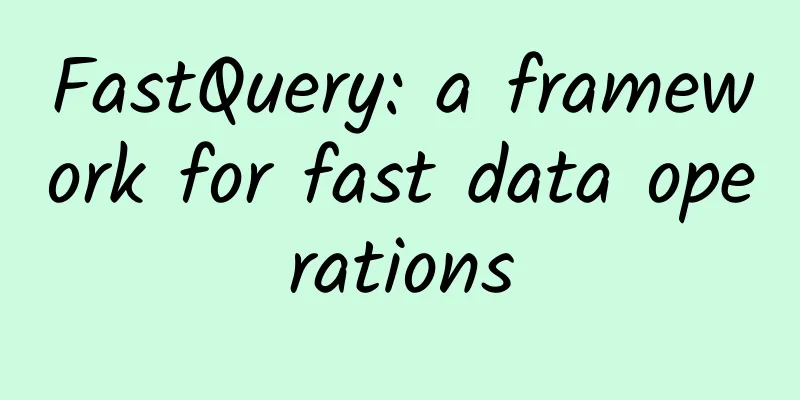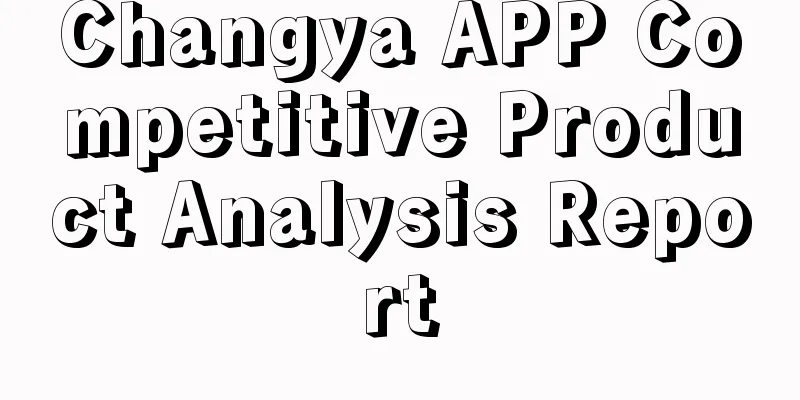FastQuery: a framework for fast data operations

|
FastQuery fast operation data layer framework FastQuery is based on Java language. Its mission is to simplify the Java operation data layer. As a developer, you only need to design and write the DAO interface, which is dynamically generated and implemented by ASM internally, and executes quickly. Therefore, the code is concise and elegant, thus greatly improving development efficiency. The main features of FastQuery are as follows:
Operating environment requirements JDK 1.8+ Configuration Files jdbc-config.xml Used to configure support for jdbc. Note: If a connection pool is used, this configuration file can be omitted.
c3p0-config.xml Support c3p0 configuration, please refer to the c3p0 official website for detailed configuration: http://www.mchange.com/projects/c3p0/ .
fastquery.json Configure the scope of the data source
A complete introductory example
|
<<: Implementing image recognition in Web development based on Google Vision API and Ionic
>>: Creating JavaScript modules with Babel and ES7
Recommend
Is the investment fee for Tangshan cosmetics mini program high? Tangshan Makeup Mini Program Investment Fees and Process
How much is the investment cost for Tangshan Make...
Analysis of the "Standing Broom" Marketing Screen-Sweeping Event!
In the past few days, a "performance art&quo...
Tesla recalls nearly 5,000 Model Xs in China: No need to go to the store, OTA remote repair problem
Tesla Motors (Beijing) Co., Ltd. recently filed a...
How to write thoughtful copy that can arouse users' "empathy"?
Heartfelt copywriting is copywriting that can aro...
Apple invests another $410 million to build an AR ecosystem, which may be combined with autonomous driving in the future
Apple recently announced on its official website ...
Cao Cao VS Liu Bei, where should the male god Guan Yu go?
Mixed Knowledge Specially designed to cure confus...
Nintendo's big bet after a decade, but this time the Switch may not win
I still remember that in 2004 and 2006, facing th...
JAC Motors is again suspected of emissions fraud: may be severely punished by the environmental protection department
In the automotive industry, emissions fraud is a ...
Get 10,000+ users in 7 days, with a conversion rate of over 50%. You only need to do 3 things to achieve success
The author of this article will interpret group f...
Taking stock of my bitter experience in DSP information flow delivery!
I was fortunate to participate in the promotion o...
After a heroic act of self-sacrifice, Chuchu Street embarks on its next billion-level journey
In the last century, the giant Kodak once monopol...
New features of iOS 9 SDK that developers need to know
[[146244]] Flowers look the same every year, but ...
If you don’t understand these, don’t start a community!
I was recently asked: How do you understand commu...
Amap launches AR driving navigation: try real-scene navigation on your mobile phone!
Although map navigation is now very popular, peop...
How much does it cost to develop a financial app in Xining?
More and more businesses are paying attention to ...









